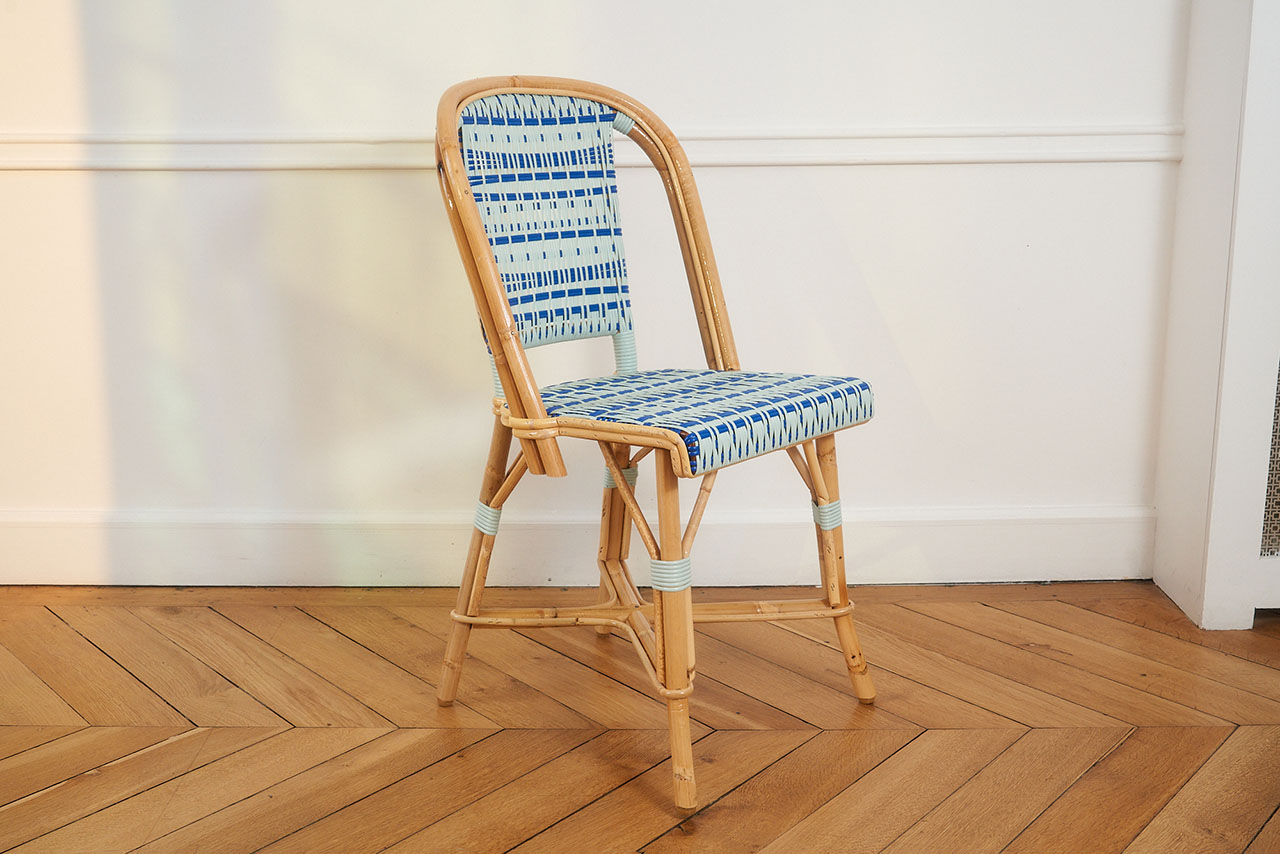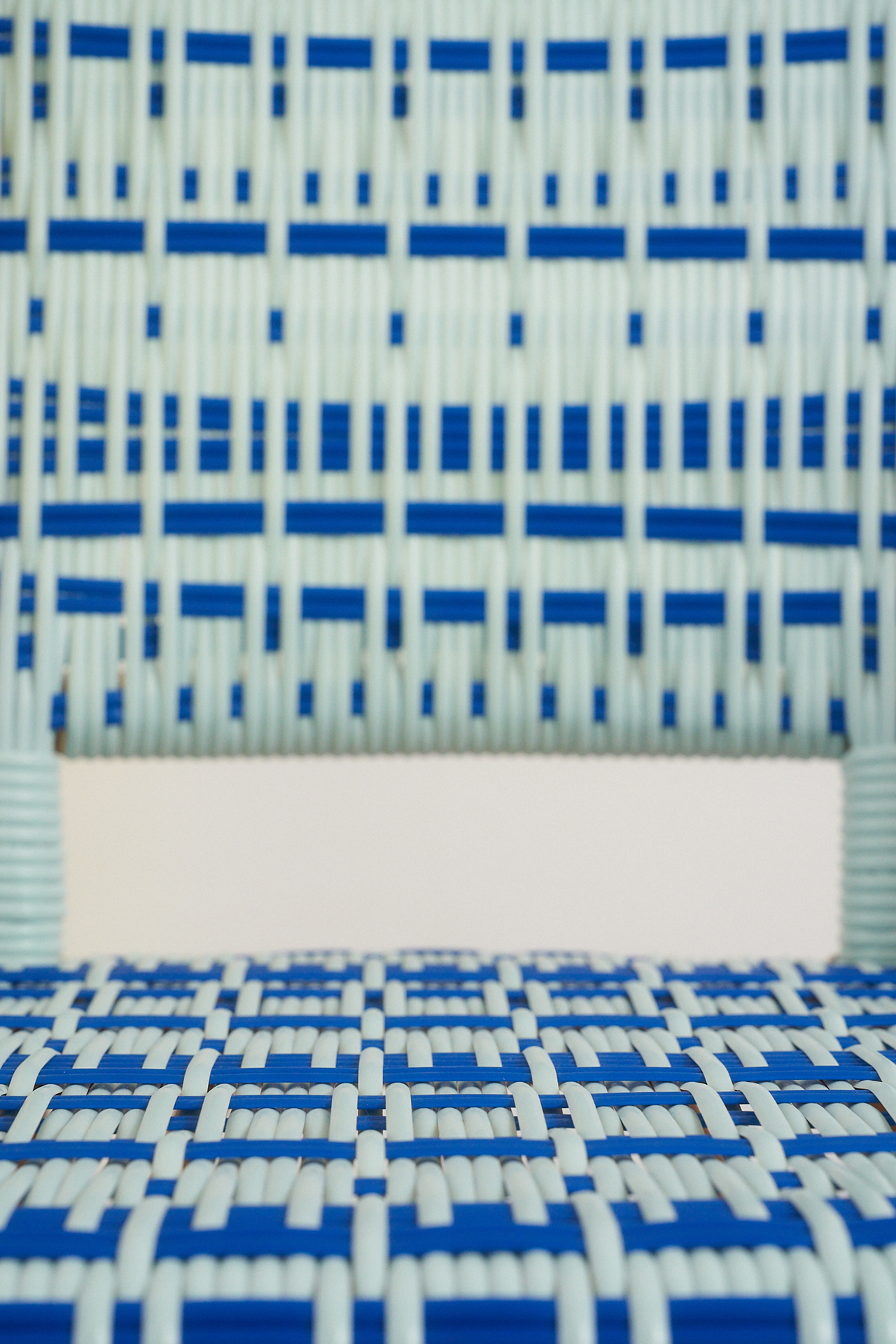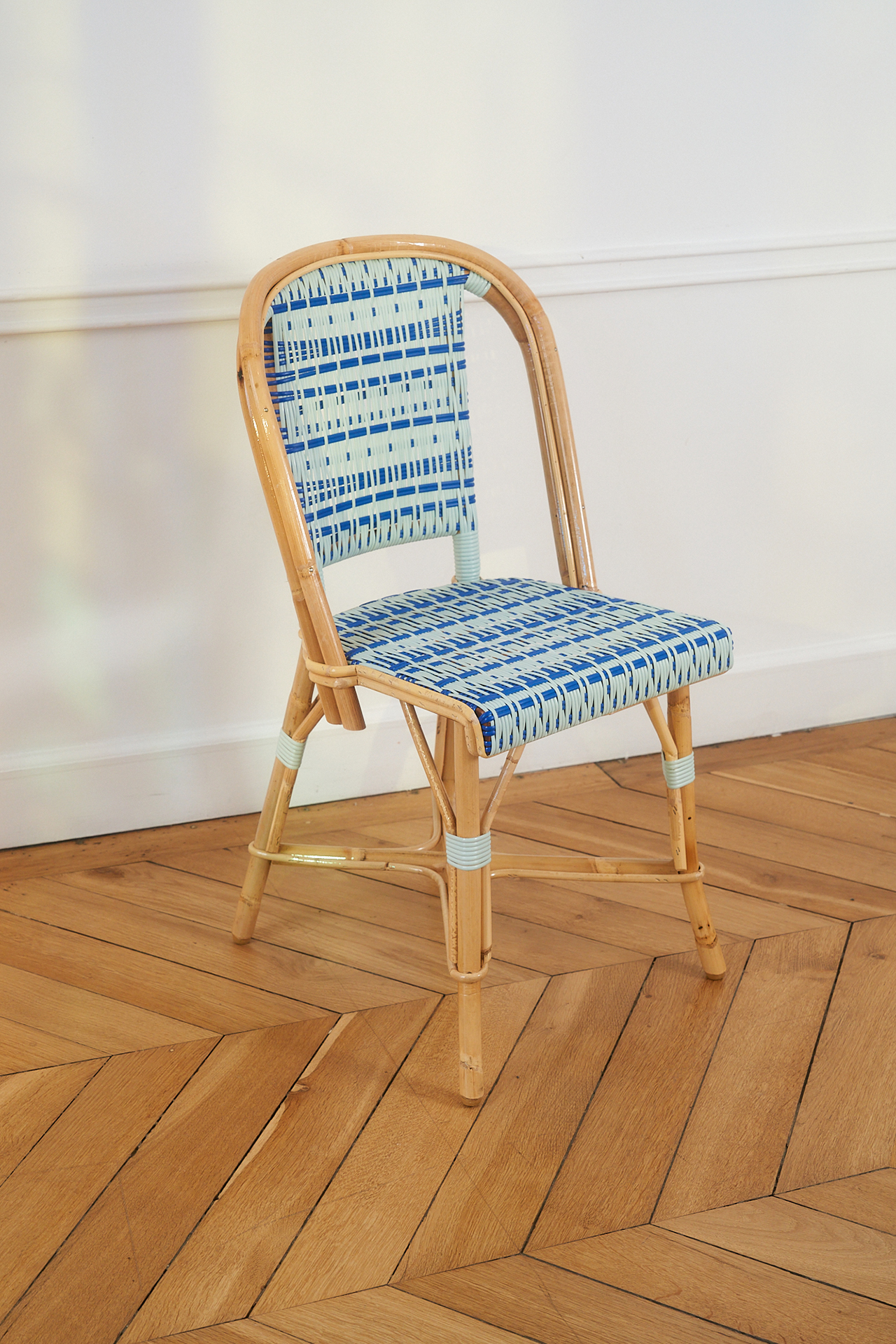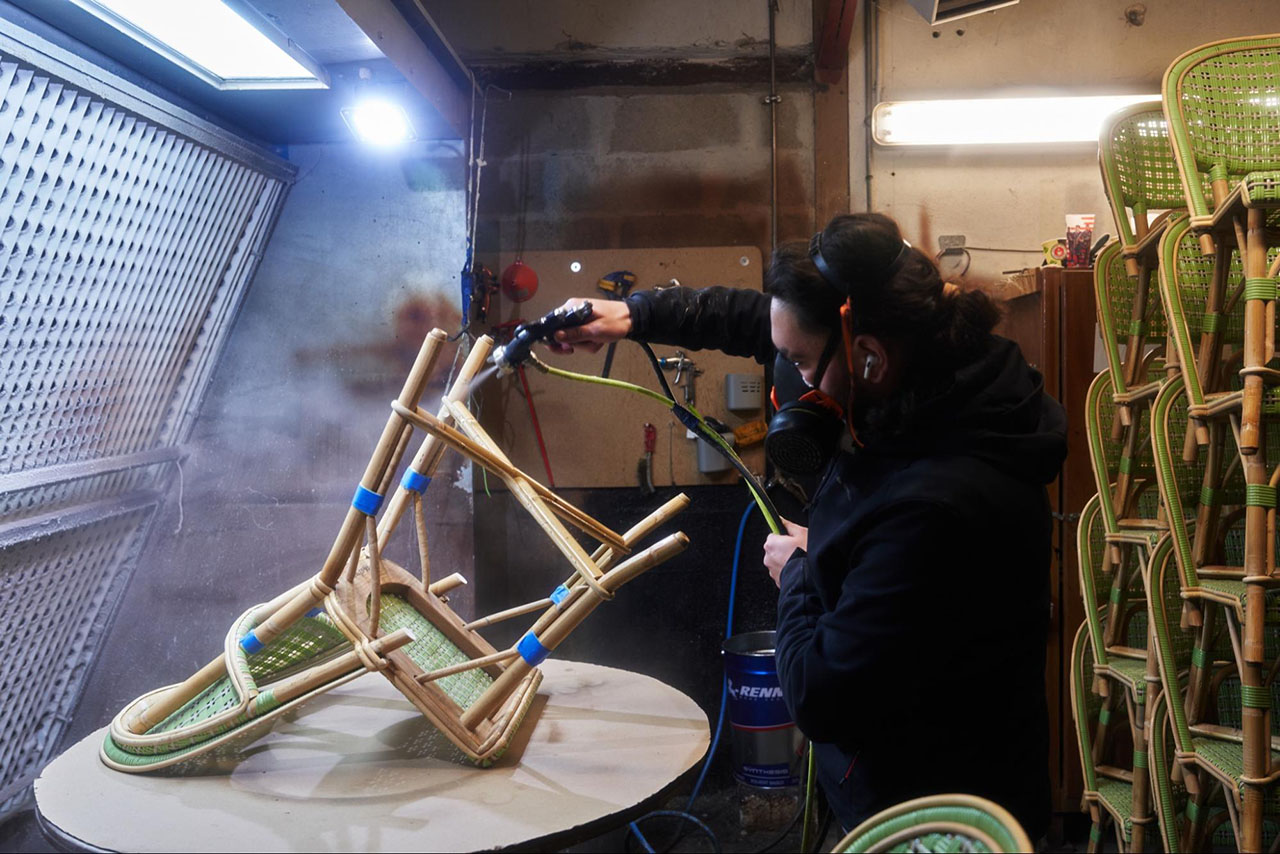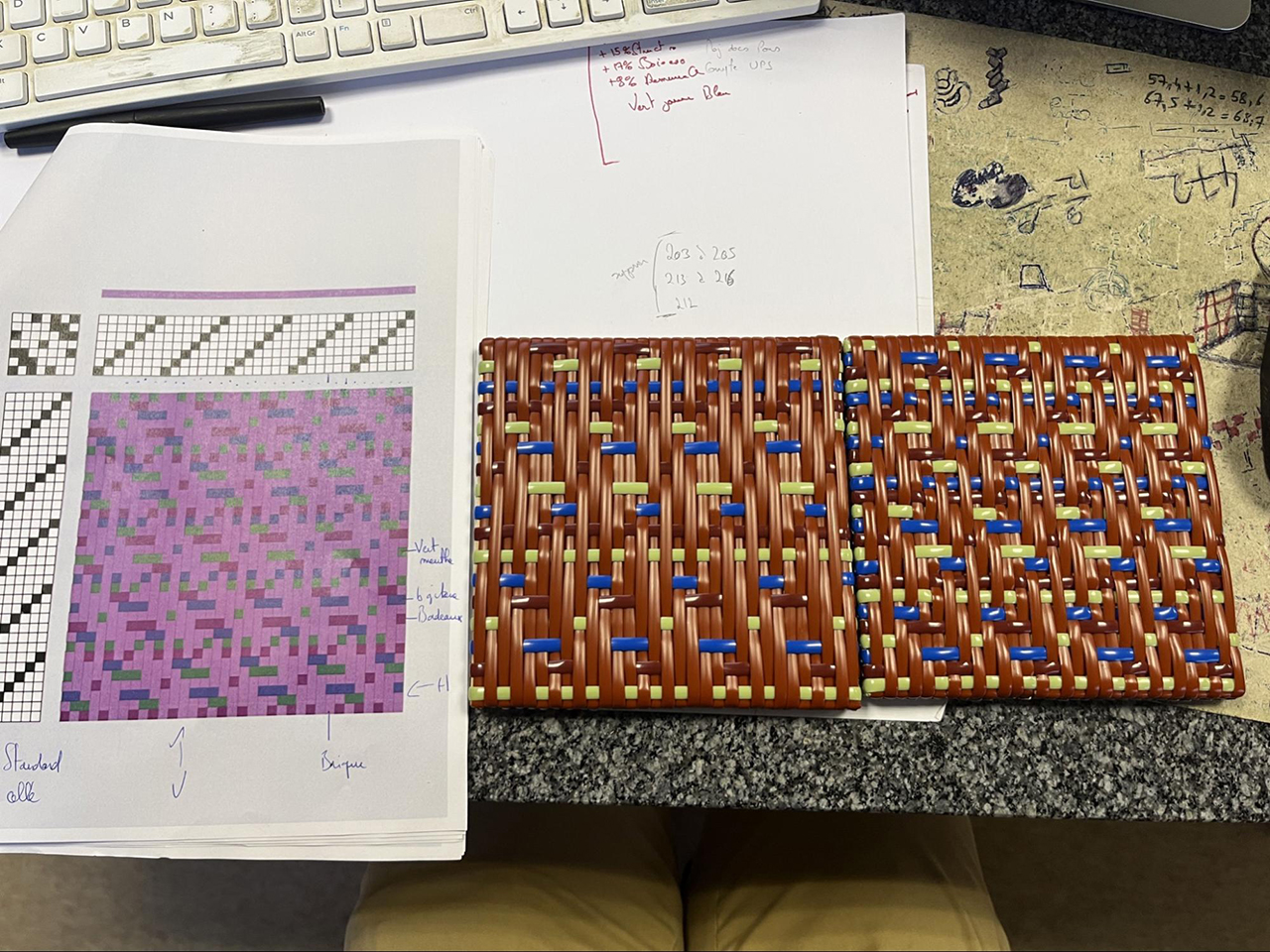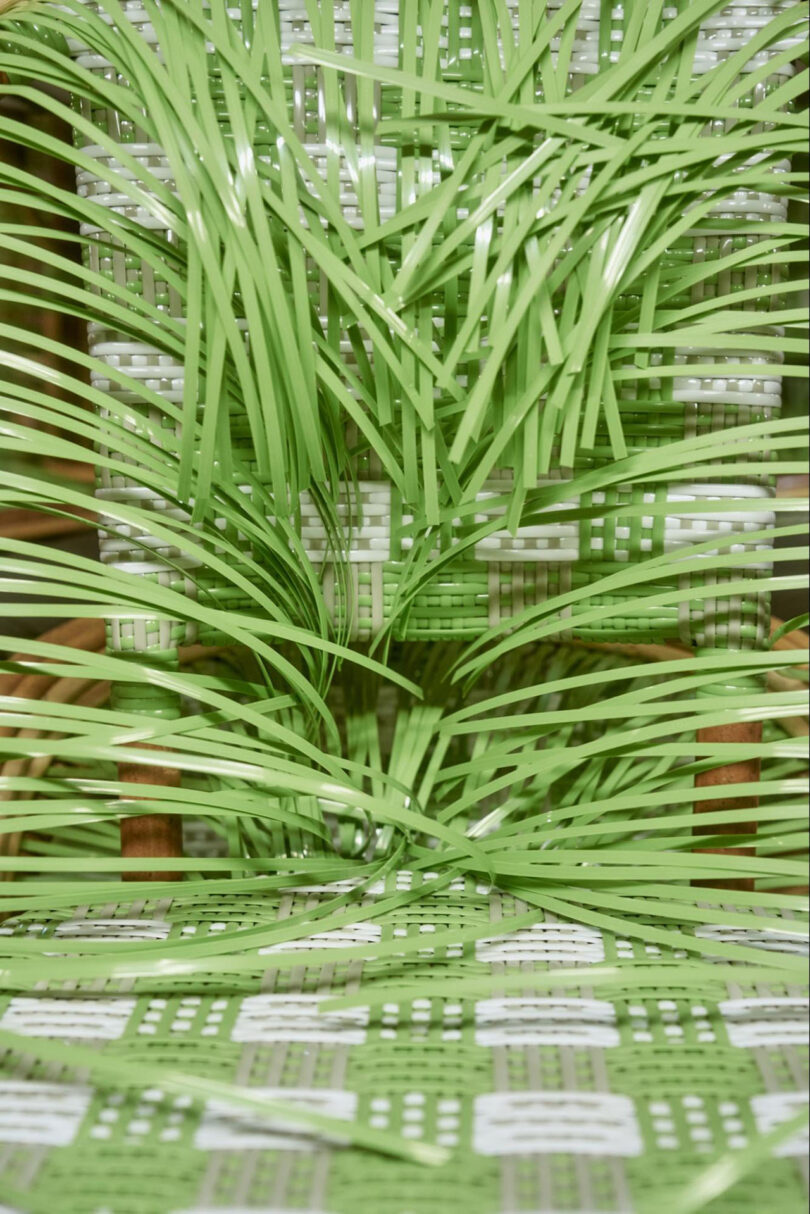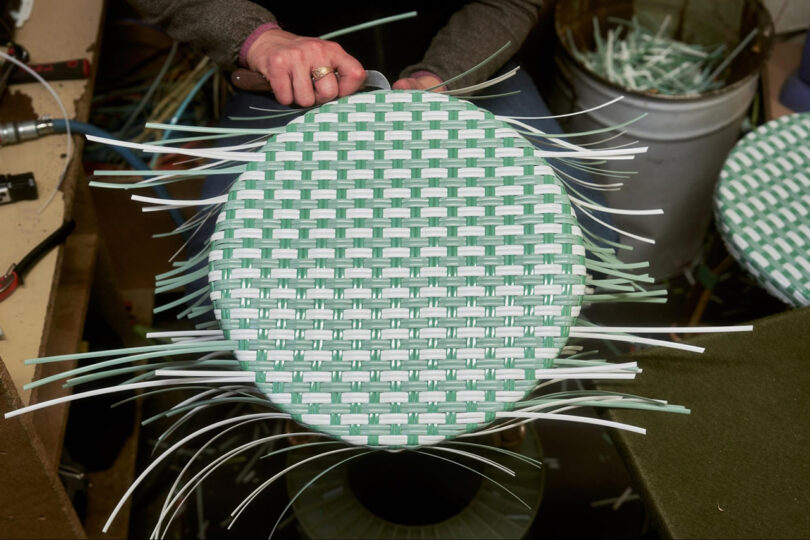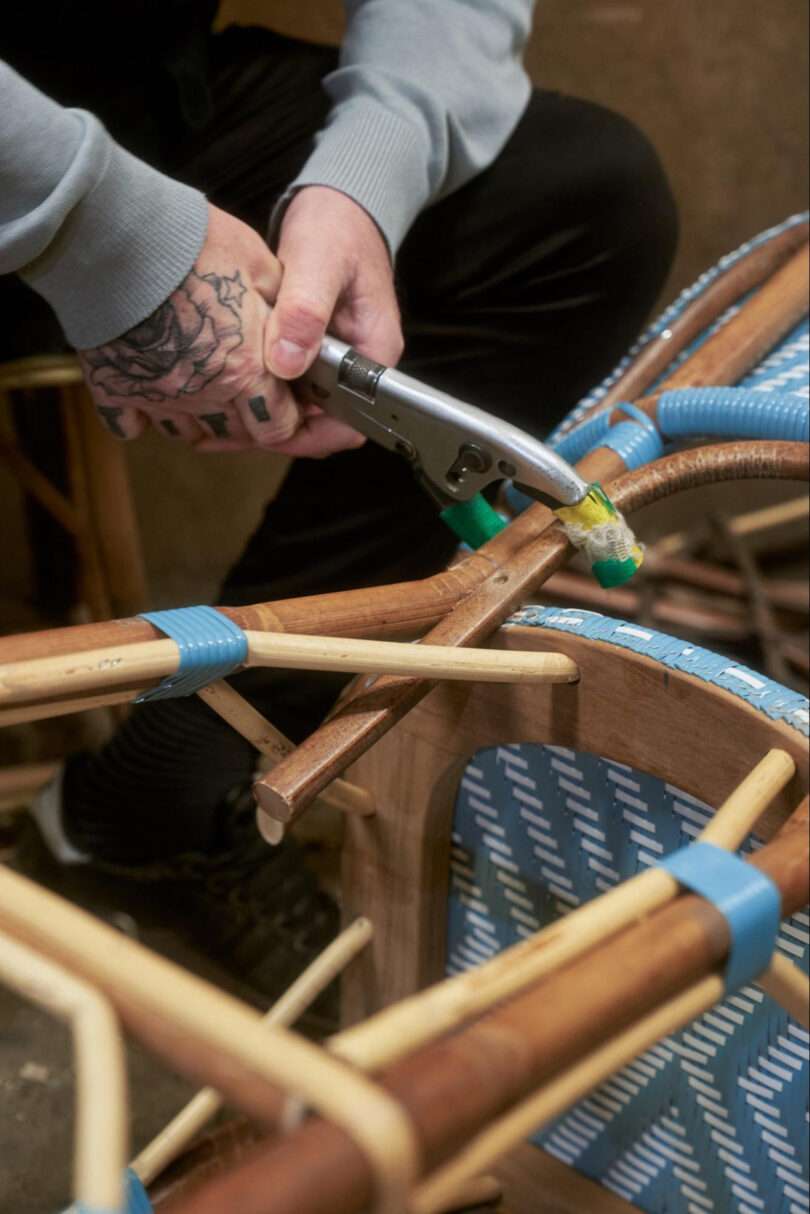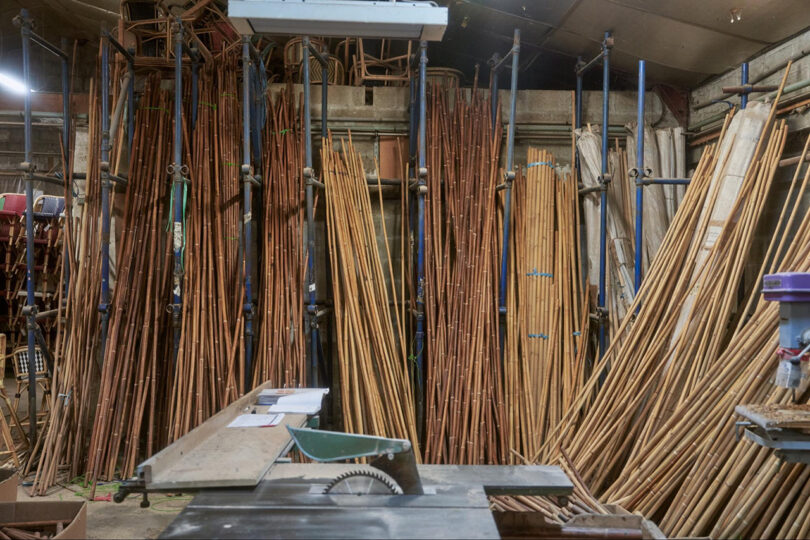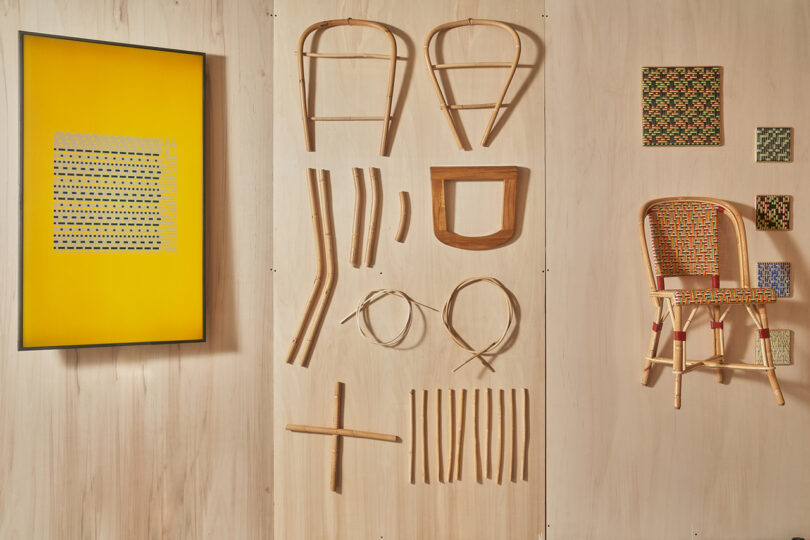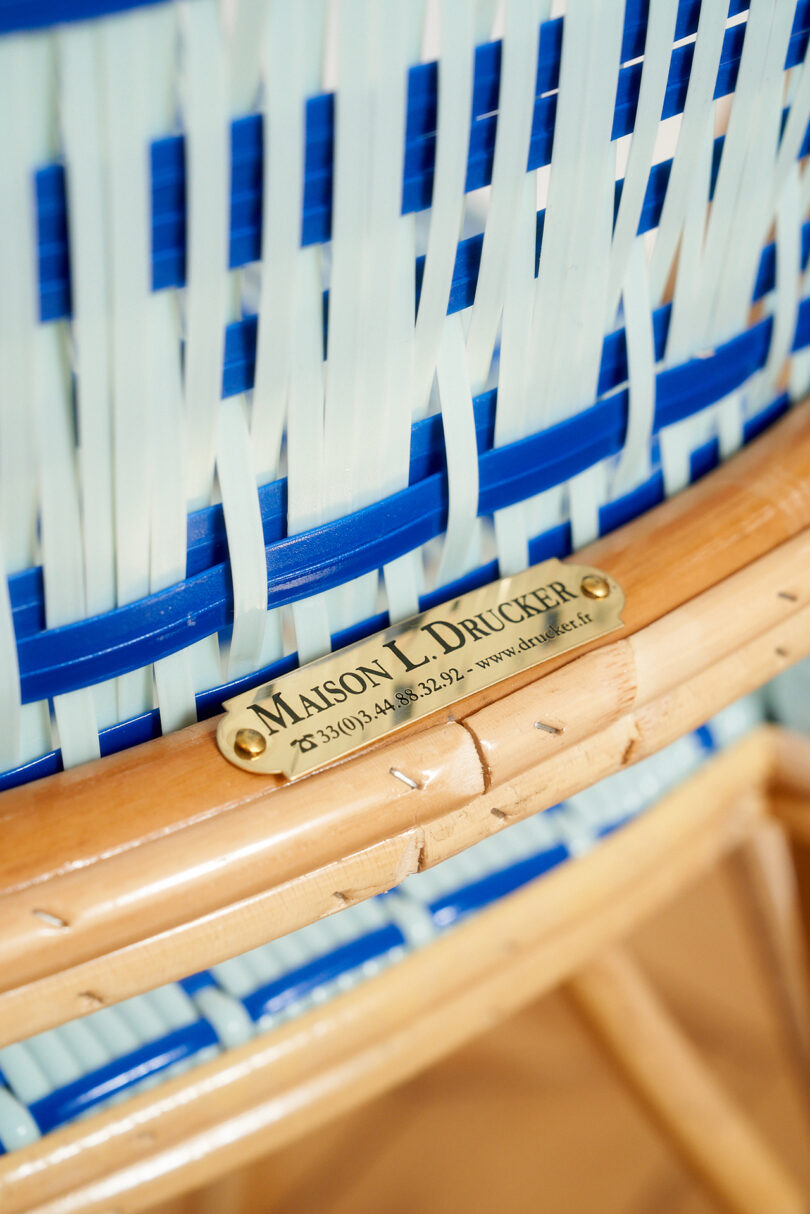This isn’t about a chair, it’s about an innovative process where digital creation meets traditional making. Simply put, Enlace connects algorithmic weaving with the time-honored traditional craft of cane weaving to create a physical product from generative output. A partnership between the historic Parisian chair manufacturer Maison Louis Drucker, studio Aranda\Lasch, and TRAME – the collaborative studio and curated gallery with a focus on limited-edition design and art with digital provenance – envisioned Enlace and turned it into a reality. The result is a seamless integration of both digital and handcrafted processes, encapsulating the essence of the weaver’s personality within each piece.
The project focuses on the renowned Parisian cafe chair designed by Maison Louis Drucker, established in 1885, known for its distinctive bentwood frame and woven rattan patterns – you likely already know the one we’re talking about. Recognizing an opportunity to reinvent this iconic piece for the digital era, Aranda\Lasch and TRAME used generative weaving techniques to craft a series of bespoke chairs, initially minted with Bright Moments gallery, as digital artworks. Enlace was released as part of the Bright Moments Paris Collection on February 20, 2024. Collectors can redeem their generative token, of which there are 100, for a physical chair made by Maison L. Drucker using the unique weaving instructions in their digital artwork.
Step 1: Building the Prototype
The project began with a basic prototype, leaving room to explore various design ideas and iterations. The Enlace algorithm dictates practical weaving constraints, ensuring compatibility with Maison L. Drucker’s in-house techniques. Token holders then rely on Maison L. Drucker’s specifications for weaving color, type, and material when acquiring a unique woven chair or canvas.
Step 2: Crafting the Framework; The Weaving Blueprint
A weaving blueprint is distinguished by its four-part layout, a standardized template that communicates the information allowing weavers to execute a pattern, regardless of scale or intricacy. A visual language for weaving; it guides the process thread by thread. Enlace reinterprets the language as the foundation for generative outcomes, making subtle adjustments while preserving its practicality. In essence, Enlace serves as a universal set of weaving guidelines that are understandable to both human and machine weavers.
Step 3: Testing the Output
Weaving drafts allow weavers to document and share their work. Often, the weaving draft is rendered artistically to serve as clear instructions and, as a result, becomes a work of art in itself. Visually, Enlace abstracts the language for generative outputs, slightly altering its representation from convention while keeping its utility intact. In other words, any weaver, human or machine, will know how to read Enlace as a set of weaving instructions. In this sense, Enlace is not about making a final product but rather using the token as a means to something else – the minimum instructions needed to make either a woven chair or woven canvas.
Step 4: The Weaving Process
“I believe ultimate creativity will always be human, but that creativity can be enhanced by algorithms,” shares Diego DuBois, CEO, Maison L. Drucker. “For instance, algorithms can generate patterns quickly and save time, or [they can] make the discovery of patterns that may not be considered otherwise. Also, algorithms can be tailored to various criteria and explore possibilities within constraints such as cost or color combination, which also saves time.”
Step 5: Crafting the Chair; Evolving Weaving Fibers
Maison L. Drucker uses fibers that have evolved from the use of natural blades to modern materials like PA11 (Rilsan) and high-tech PEHD (Raucord). These fibers, which share a semi-round shape of 5mm in width and 1.2mm in height, have revolutionized the weaving process. Natural blade was the sole weaving fiber used from 1885 until 1950, requiring the meticulous painting of fiber by fiber to create patterns. Thankfully, the introduction of glossy PA11 in 1950 and satin-like high-tech PEHD in 2012 expanded the possibilities with their array of colors.
Step 6: Manufacturing Quality Chairs; Iterative Production Processes
While manufacturing the chair, the team prioritizes two qualities: refinement and strength. Through careful selection of materials and ongoing process refinement that’s guided by client feedback, methods are continuously being improved. Crafting each chair demands a minimum of 8 hours, with more intricate pieces requiring up to 40 hours of meticulous work. Collaborations with designers allow the team to integrate creative concepts while taking practical manufacturing into consideration.
Step 7: Uniting Traditions; The Enlace Final Product
The term “Enlace” holds nuanced meanings in both English and French, symbolizing intertwining and connection in weaving as well as physical embrace. Rooted in the Latin “laceare,” meaning “to entwine,” signifies the convergence of disparate elements.
Enlace facilitates a co-creative process, bridging digital tools with the artisanal heritage of craft. Consequently, it asserts that generative processes enhance traditional craftsmanship and its legacy.
There’s more to come from A\L x TRAME in 2024, sign up for TRAME’s newsletter to stay informed!


